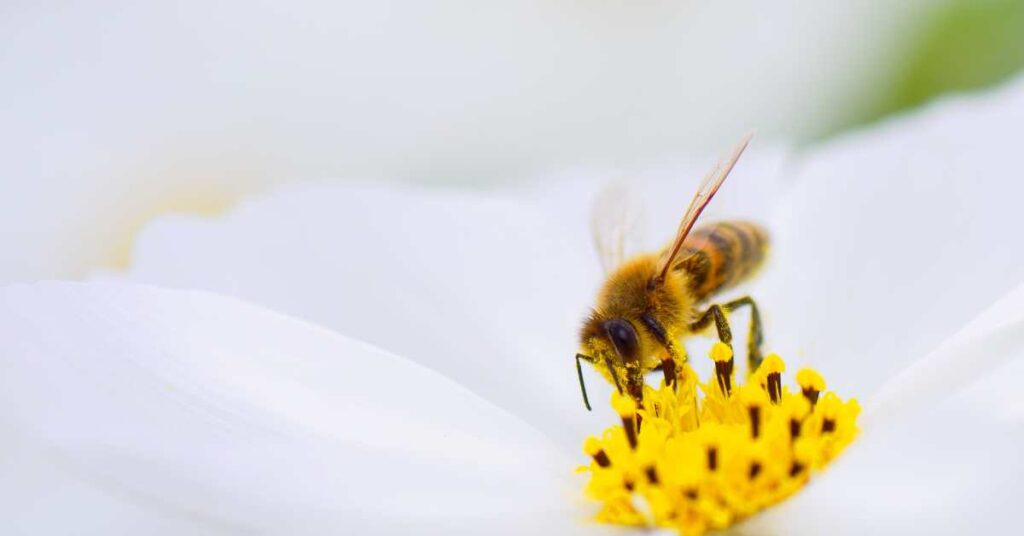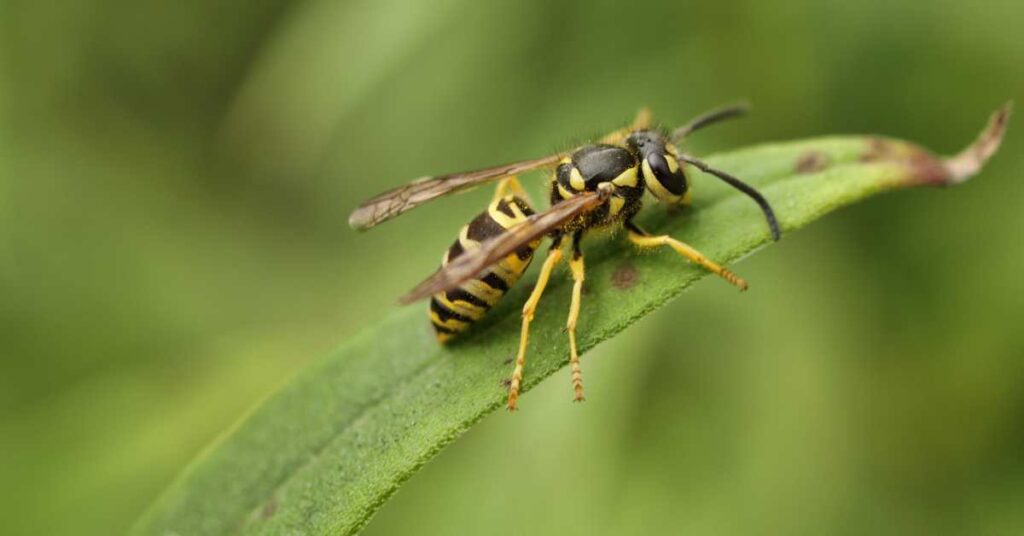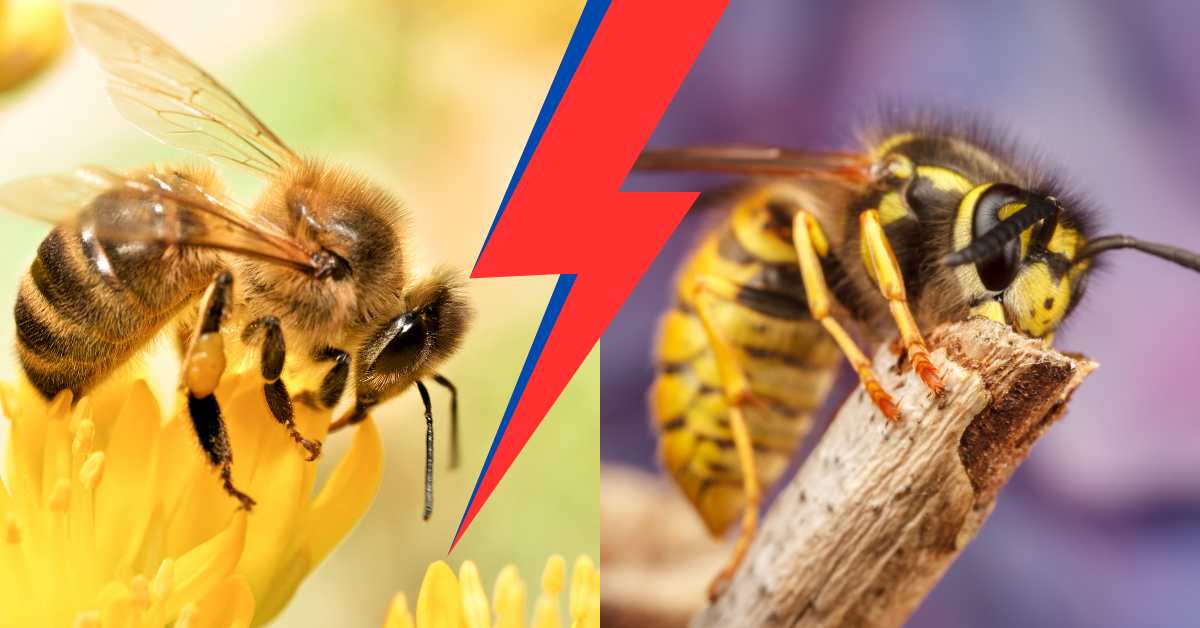Introduction
When it comes to insects that interact closely with humans, the honey bee vs yellow jacket comparison often arises. Although these two insects look somewhat similar, they are distinct species with very different roles in nature. While honey bees are known for their vital role in pollination and honey production, yellow jackets are recognized for their aggressive behavior and predatory habits.
This article delves into the environmental significance of both the honey bee and yellow jacket, shedding light on their behaviors, ecological roles, and the balance they help maintain within ecosystems.
Honey Bee Overview

Species and Physical Characteristics
In the honey bee vs yellow jacket discussion, the honey bee (Apis mellifera) stands out as one of the most crucial pollinators in the world. Honey bees are part of the Apidae family and are known for their iconic yellow and black striped bodies, their fuzzy thorax, and translucent wings.
Honey bees are smaller than yellow jackets, ranging from 12 to 15 millimeters in length. Their bodies are covered in fine hairs, which makes them excellent at collecting and spreading pollen.
- Common species: The European honey bee (Apis mellifera) is the most studied and recognized species worldwide.
- Body features: The honey bee has a furry appearance, which is crucial for its role in pollination and sets it apart from the smooth-bodied yellow jacket.
Honey Bee vs Yellow Jacket: Colony Structure and Behavior
In the honey bee vs yellow jacket comparison, one key difference is how they organize their colonies. Honey bees are social insects living in colonies made up of a queen, worker bees, and drones. A colony may consist of 20,000 to 80,000 bees, all working together to ensure the survival and growth of the hive.
- Queen bee: The queen is the sole reproductive member of the hive, laying up to 2,000 eggs daily. She is the heart of the colony, capable of living for several years.
- Worker bees: Worker bees are female bees that perform a variety of tasks, from foraging to caring for the larvae and defending the hive.
- Drones: Male drones exist to mate with the queen and die shortly after fulfilling this role. They are usually expelled from the hive in late autumn when they are no longer needed.
Pollination and Honey Production
When discussing honey bee vs yellow jacket, the honey bee’s role in pollination cannot be overstated. As honey bees move between flowers collecting nectar, their hairy bodies trap pollen, enabling fertilization. This process is crucial for the reproduction of flowering plants and the success of many agricultural crops.
- Honey production: Honey bees use the nectar they collect to produce honey, which serves as food for the colony during colder months.
- Environmental impact: Honey bees are essential for pollinating over one-third of the crops humans rely on, from fruits and vegetables to nuts.
Yellow Jacket Overview

Species and Physical Characteristics
Yellow jackets, members of the family Vespidae, are often mistaken for honey bees due to their similar black and yellow striped bodies. However, yellow jackets are much more aggressive and are equipped with smooth, shiny bodies. Unlike the honey bee, which dies after a single sting, yellow jackets can sting multiple times without consequence.
- Common species: The Eastern yellow jacket (Vespula maculifrons) and Western yellow jacket (Vespula pensylvanica) are two of the most familiar species in North America.
- Body features: Yellow jackets are more robust and less hairy than honey bees, which makes them more efficient predators.
Honey Bee vs Yellow Jacket: Colony Structure and Behavior
Yellow jackets are also social insects, but their colonies are much smaller compared to honey bees. A yellow jacket colony may consist of up to 5,000 workers, and unlike honey bee colonies, which can survive for several years, yellow jacket nests are abandoned after the first frost, with only fertilized queens surviving the winter.
- Queen yellow jacket: Each spring, a fertilized queen yellow jacket will start a new nest, laying eggs that hatch into workers, and eventually, more queens.
- Worker yellow jackets: These female wasps forage for food, care for larvae, and defend the nest with their painful stings.
- Diet: Yellow jackets are carnivorous and hunt other insects, playing a role as natural pest controllers.
Ecological Role
In the honey bee vs yellow jacket comparison, yellow jackets often receive a negative reputation due to their aggressive behavior. However, they play a valuable role in nature. Yellow jackets prey on other insects, which helps control pest populations.
- Pest control: Yellow jackets help control the population of insects like flies, caterpillars, and beetles, which can be damaging to crops.
- Pollination: Though they are not as efficient as honey bees, yellow jackets also contribute to pollination by feeding on nectar.
Key Differences Between Honey Bees and Yellow Jackets Appearance and Behavior
One of the first things people notice in the honey bee vs yellow jacket debate is their physical differences. Honey bees are fuzzy and covered in tiny hairs that help them collect pollen. Yellow jackets, on the other hand, are smooth and shiny with a more aggressive disposition.
- Aggression: Yellow jackets are far more aggressive than honey bees, especially in late summer when their colonies are at peak size.
- Feeding habits: Honey bees feed primarily on nectar, while yellow jackets are carnivorous, hunting other insects and scavenging protein from human food.
Nesting Habits
In the honey bee vs yellow jacket comparison, nesting habits reveal significant differences. Honey bees construct wax hives that are used year-round and can last for several years. These hives are commonly found in hollow trees or man-made beehives.
Yellow jackets, in contrast, build paper-like nests from chewed wood pulp. Their nests are often found underground, but they can also be in attics, wall cavities, or other protected areas. These nests are abandoned each year as the colony dies off in winter.
- Hive vs nest: Honey bee hives are more permanent, whereas yellow jacket nests are temporary and often underground.
- Size of colony: Honey bee colonies are significantly larger, often containing tens of thousands of bees, while yellow jacket colonies house fewer individuals, typically numbering in the thousands.
Environmental Contributions of Honey Bees

Pollination Powerhouses
In the honey bee vs yellow jacket debate, honey bees are the champions of pollination. Honey bees are responsible for the pollination of many essential crops and flowering plants. This pollination is critical for food production and biodiversity.
- Agricultural impact: Honey bee pollination contributes to billions of dollars in global agricultural value every year.
- Ecosystem health: By pollinating wildflowers and plants, honey bees help maintain healthy ecosystems, promoting biodiversity.
Honey Production and Its Benefits
In this conversation of Honey Bee vs Yellow Jacket there is a plus to their critical role as pollinators, honey bees produce honey, which humans have used for centuries as food and medicine. Honey is rich in antioxidants and has natural antibacterial properties.
- Honey as food: Honey is not only a sweetener but also provides essential nutrients and has health benefits for humans.
- Sustainable beekeeping: Beekeeping supports local economies and fosters a symbiotic relationship between humans and the environment.
Environmental Contributions of Yellow Jackets

Natural Pest Control
While yellow jackets may not be as beloved as honey bees, they are incredibly effective at controlling insect populations. Yellow jackets feed on a wide range of insects, including many species that are considered pests by humans.
- Agricultural benefits: Yellow jackets reduce the number of insect pests that harm crops, reducing the need for chemical pesticides.
- Biodiversity balance: By preying on various insects, yellow jackets help maintain a balance within ecosystems.
Pollination Role Honey Bee vs Yellow Jacket
Though yellow jackets are not as efficient pollinators as honey bees, they do contribute to pollination. When feeding on nectar, yellow jackets inadvertently transfer pollen between plants, though this is more of a side effect of their foraging habits.
- Secondary pollinators: While honey bees are the primary pollinators, yellow jackets still play a role in pollination within certain ecosystems.
Conflicts Between Honey Bees and Yellow Jackets
Competition for Resources
In the honey bee vs yellow jacket dynamic, competition can arise for resources like nectar and honey. Yellow jackets are known to raid honey bee hives, stealing honey and even killing bees in the process.
- Hive raids: Yellow jackets may invade honey bee hives, especially in the fall when food sources become scarce.
- Food competition: Both insects are attracted to sweet substances, leading to increased competition during certain times of the year.
Human-Wildlife Conflicts
Both honey bees and yellow jackets can cause problems for humans, though the nature of the conflict differs. Honey bees generally only sting when provoked or in defense of their hive, whereas yellow jackets are more likely to sting without much provocation.
- Honey Bee vs Yellow Jacket Sting risks: Honey bee stings are less dangerous for most people, while yellow jacket stings are more painful and can be life-threatening in cases of allergic reactions.
- Honey Bee vs Yellow Jacket Public perception: Yellow jackets are often viewed negatively due to their aggressive behavior, whereas honey bees are seen as beneficial insects.
Conservation of Honey Bees vs Yellow Jackets
Threats to Honey Bees
Honey bees face numerous threats, including habitat loss, pesticide use, disease, and climate change. One of the most concerning issues is colony collapse disorder (CCD), where entire colonies of honey bees die or disappear without explanation.
- Pesticides: Certain pesticides, particularly neonicotinoids, have been linked to declining honey bee populations.
- Habitat conservation: Creating pollinator-friendly habitats, such as gardens filled with native flowers, can support honey bee populations.
Importance of Yellow Jacket Conservation
Despite their negative reputation, yellow jackets are essential for maintaining ecological balance. As natural pest controllers, they help reduce the need for chemical pesticides and promote biodiversity.
- Pest control role: Yellow jackets’ predation on pest insects helps protect crops and reduces the need for insecticides.
- Public education: Teaching people about the benefits of yellow jackets and how to coexist with them can help minimize unnecessary extermination efforts.
Honey Bee vs Yellow Jacket: Conclusion
In the honey bee vs yellow jacket comparison, both insects play unique and valuable roles within their ecosystems. Honey bees are indispensable pollinators, contributing to the production of food and the maintenance of biodiversity, while yellow jackets serve as natural pest controllers, helping to regulate insect populations.
By understanding and appreciating the differences between Honey Bee vs Yellow Jacket, we can better protect both species and the environments they help sustain. Each insect, though vastly different, is vital to the balance of nature and the health of ecosystems around the world.
Read More: White Ants: Understanding the Environmental Niche of Termites

